Cesium Releases in June 2023
In May we announced support for Esri ArcGIS location services in CesiumJS and our partnership with Google Maps Platform to render Photorealistic 3D Tiles. Among the many possibilities opened up by these collaborations is a demo app showing travel time using CesiumJS, Esri, and Photorealistic 3D Tiles. (Try it and tell us what you think.) We also shared the first four recipients of Cesium Ecosystem Grants, who are committed to opening and expanding the 3D geospatial ecosystem.
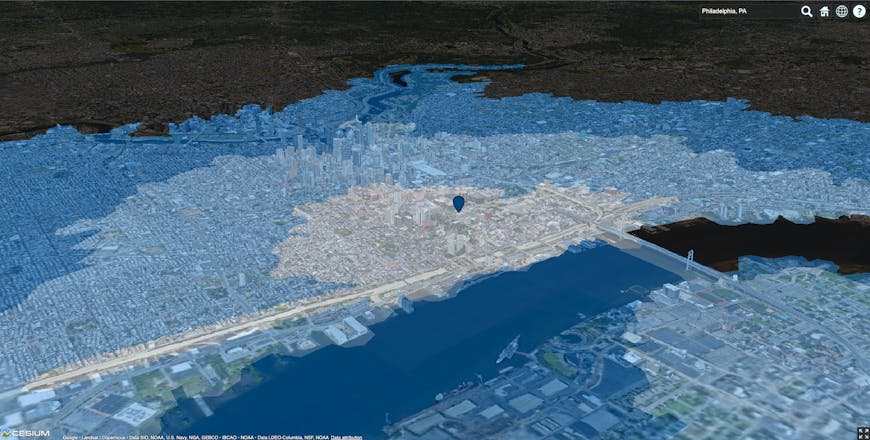
Travel time from Cesium headquarters in Philadelphia, PA, USA.
CesiumJS 1.106 Release
CesiumJS 1.106 is now available. Highlights of this release include:
- Fixed label background rendering. #11293
- Fixed color creation from CSS color string with modern "space-separated" syntax. #11271
- Fixed tracked entity camera controls. #11286
For more details, see the changelog. You can subscribe to the Cesium release roundup thread on the community forum to get notifications about our monthly releases.
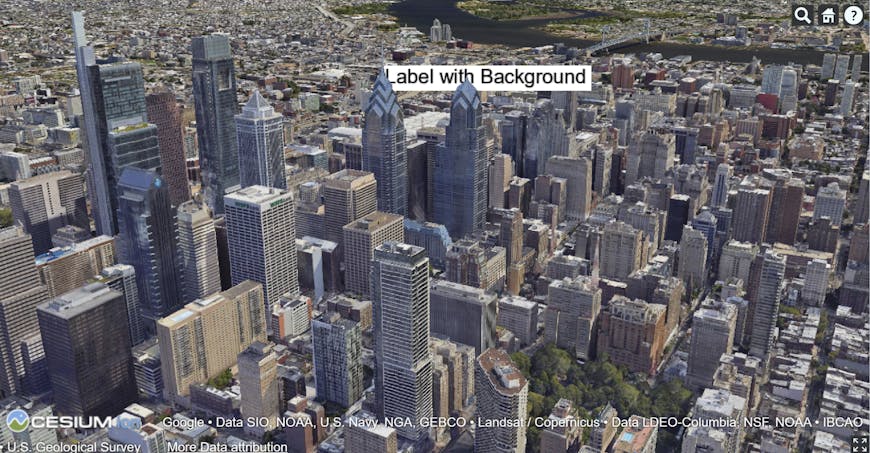
Label background rendering in CesiumJS.
Cesium for Unreal 1.27.0 Release
Cesium for Unreal v1.27.0 is now available. This release includes support for Unreal Engine 5.2. Plus, in UE 5.2, Cesium for Unreal can now be used inside the Unreal Editor on Linux, and it has native support for Apple silicon (M1, M2) processors on macOS.
Other changes in this release include:
- Added point cloud shading options to
Cesium3DTileset, which allow point cloud tilesets to be rendered with attenuation based on geometric error. - GZipped files are now automatically decompressed when loaded, which is especially helpful for compressed tilesets loaded from the local file system.
- Added new settings to the Cesium section of the Project Settings, allowing users to control how many requests to handle before pruning and also how many elements to keep in the cache after pruning.
- Improved visual quality of shadows by correctly setting the “Ambient Occlusion” material property in the default Cesium materials.
- Fixed a crash when attempting to use Cesium Actors with World Partitioning.
Check the Cesium for Unreal (UE5) release and the Cesium for Unreal Samples release for the full list of updates.
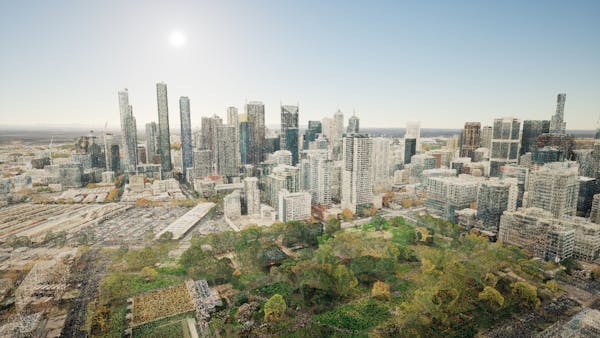
Point cloud provided by the City of Melbourne, Australia, tiled by Cesium ion, rendered as-is in Cesium for Unreal.
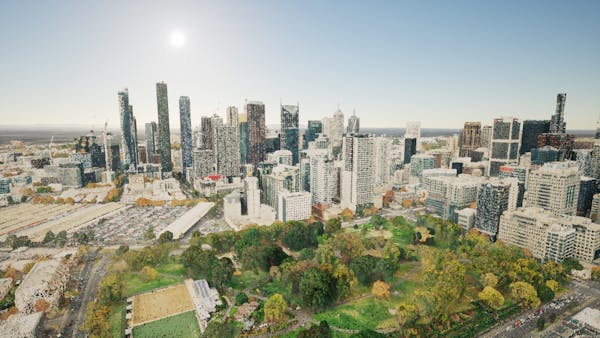
The same point cloud rendered with point attenuation based on geometric error in Cesium for Unreal.
Cesium for Unity 1.3.0 Release
Cesium for Unity v1.3.0 is now available. It contains some important bug fixes and usability improvements, including:
- Cesium components now appear in a “Cesium” category in the Component menu, and have a custom icon.
- Fixed a bug that could cause missing textures when using two raster overlays with the same projection on a single tileset.
- Fixed a bug where
Cesium3DTilesetwould not reflect changes made to the properties of its opaque material in the Editor. - Fixed a bug where changing the origin on a
CesiumGeoreferencewould not propagate these changes to the activeCesiumSubScene, if one exists. - Reduced the amount of extraneous camera rotation in the
CesiumCameraControllerafter a frame hitch by usingTime.smoothDeltaTime. - Fixed a bug that caused mipmaps to be generated for textures that shouldn't be mipmapped, sometimes leading to cracks between tiles and other problems.
Check the changelog for the full list of updates, and follow our Cesium for Unity tutorials to get started.
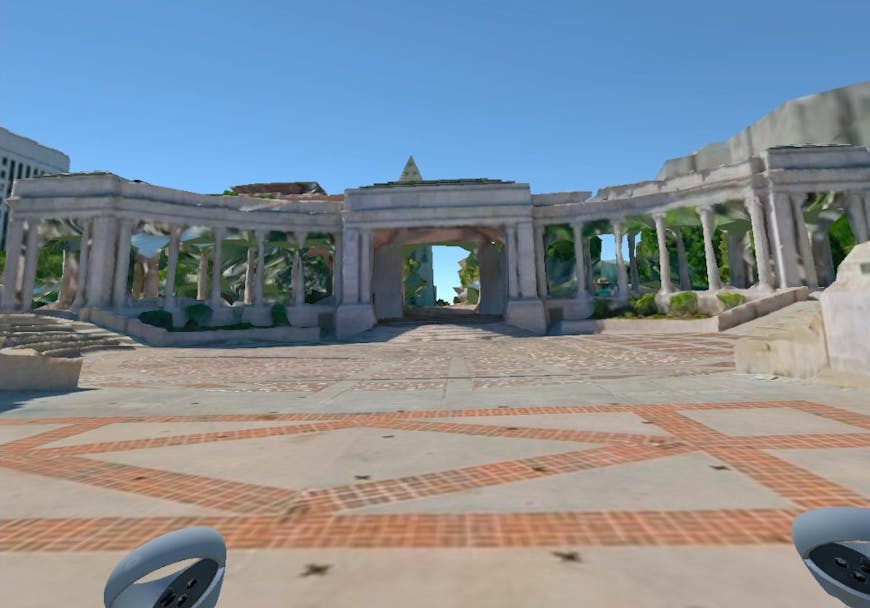
Civic Center Park in Denver, Colorado, USA, rendered in Cesium for Unity in a VR environment. Check out the improved VR01_CesiumDenver scene in the Cesium for Unity Samples to try it out yourself.
Cesium for Omniverse 0.7.0 Release
Highlights of this release include:
- Set better default values when loading glTFs with the
KHR_materials_unlitextension. This improves the visual quality of Google 3D Tiles. - Improved installation process by forcing application reload when Cesium for Omniverse is first enabled.
- Changed material loading color from red to black.
- Added
/CesiumSessionprim for storing ephemeral state in the Session Layer, includingecefToUsdTransform. - Fixed credits not appearing on all viewports.
- Updated to Cesium Native 0.24.0, which adds support for 3D Tiles 1.1 implicit tiling.
Peruse the changelog for the full list of updates, and get started with our Cesium for Omniverse tutorials.

Taipei, Taiwan, in Cesium for Omniverse.
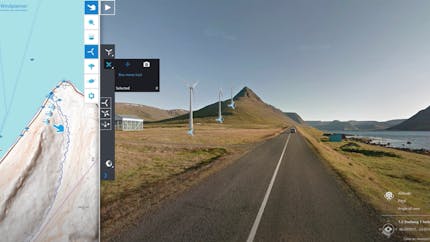
Windplanner uses CesiumJS to enable its users to plan and show the visual outcome of renewable energy project placement.
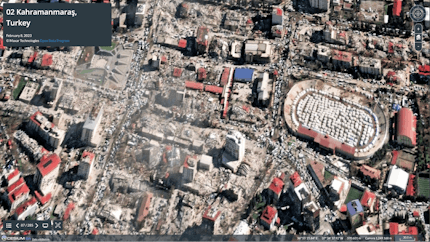
Hidenori Watanave has been updating a Cesium Story for the public since the 7.8-magnitude earthquake hit Turkey and Syria in February.

MathWorks users can visualize aerospace vehicle dynamics and location using Cesium for Unreal.